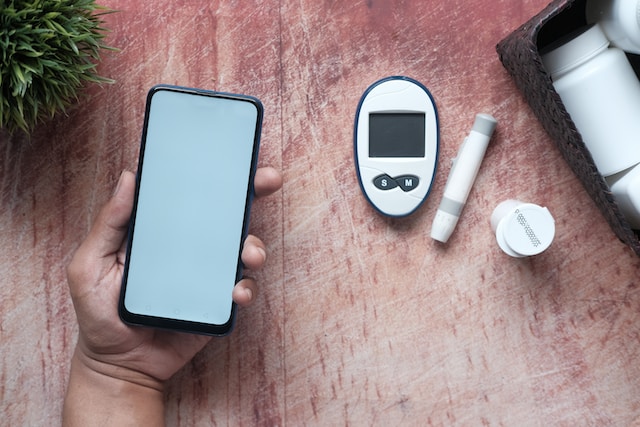The International Diabetes Federation, or IDF, estimates that in 2021, 537 million adults (aged 20-79) worldwide had diabetes. IDF estimates that by 2045, the worldwide incidence of diabetes will reach 783 million.
Diabetes is a chronic, life-threatening disease for which there is no known cure and has other significant adverse consequences for human health worldwide. The condition is caused by the body’s inability to produce or effectively utilize the hormone insulin. This inability prevents the body from adequately regulating blood glucose levels.
Glucose, the primary energy source for cells, must be maintained at certain concentrations in the blood to permit optimal cell function and health. Typically, the pancreas provides control of blood glucose levels by secreting the hormone insulin to decrease blood glucose levels when concentrations are too high.
In people with diabetes, the body does not produce sufficient insulin levels or fails to utilize insulin effectively, causing blood glucose levels to rise above normal. This condition is called hyperglycemia and often results in acute complications and chronic long-term complications such as heart disease, limb amputations, loss of kidney function, and blindness. When blood glucose levels are high, people with diabetes often administer insulin to decrease blood glucose levels.
Unfortunately, insulin administration can drive blood glucose levels below the normal range, resulting in hypoglycemia. In cases of severe hypoglycemia, people with diabetes risk acute complications, such as loss of consciousness or death.
Due to the drastic nature of acute complications associated with hypoglycemia, many people with diabetes are reluctant to reduce blood glucose levels. Consequently, these individuals often remain in a hyperglycemic state, increasing their odds of developing long-term chronic complications.
Limitations of Existing Glucose Monitoring Products
Single-point finger stick devices are the most prevalent devices for glucose monitoring. These devices require taking a blood sample with a finger stick, placing a drop of blood on a test strip, and inserting the strip into a glucose meter that yields a single point in time blood glucose measurement. As per DexCom, these devices suffer from several limitations, including:
- Limited Information: Even if people with diabetes test several times daily, each measurement represents a single blood glucose value at a single time. Without the ability to determine whether their blood glucose level is rising, falling, or holding constant and the rate at which their blood glucose level is changing, the individual’s ability to effectively manage and maintain blood glucose levels within normal ranges is severely limited.
- Inconvenience: People with diabetes using single-point finger stick devices must always carry a fully supplied kit that may include a spring-loaded needle or lancet, disposable test strips, cleansing wipes, and the meter, and then safely dispose of the used supplies. This process is inconvenient and may cause uneasiness in social situations.
- Difficulty of Use: To obtain a sample with single-point finger stick devices, people with diabetes generally prick one of their fingertips or, occasionally, a forearm with a lancet. This task can be difficult for individuals with decreased tactile sensation and visual acuity, which are common complications of diabetes.
- Pain: Although the fingertips are rich in blood flow and provide a good site for blood samples, they are also densely populated with highly sensitive nerve endings. This makes the lancing and subsequent manipulation of the finger to draw blood painful. The pain and discomfort are compounded by fingers offering limited surface area, so tests are often performed on sore areas from prior tests.
How does GoodRx work & make money | Business Model
What does Dexcom do? How does DexCom work to solve this problem?
DexCom, founded in 1999, is a medical device company primarily focused on the design, development, and commercialization of continuous glucose monitoring, or CGM, systems for use by people with diabetes and by healthcare providers. It operates internationally with headquarters in San Diego, California, and has manufacturing facilities in Mesa, Arizona, and Batu Kawan, Malaysia.
DexCom received approval from the United States Food and Drug Administration, or FDA, and commercialized its first product in 2006. DexCom received FDA marketing authorization and launched its latest generation system, the Dexcom G6 integrated Continuous Glucose Monitoring System, or G6, in 2018. More recently, DexCom received marketing clearance from the FDA on the Dexcom G7 in December 2022.
DexCom believes continuous glucose monitoring has the potential to enable more people with diabetes to achieve and sustain tight glycemic control with minimal disruption to their daily lives. DexCom’s current CGM systems offer the following potential advantages to people with diabetes:
- Potential for Improved Outcomes: Randomized clinical trials and peer-reviewed published data have demonstrated that patients with diabetes who used continuous glucose monitoring devices to help manage their disease experienced significant improvements in glucose control, including when compared to patients relying solely on single-point finger stick measurements (i.e., less time in hypoglycemia and hyperglycemia) and reductions in A1c levels when compared to baseline.
- Access to Real-Time Values, Trend Information, and Alerts: People with diabetes can view their current glucose value and a graphical display of the historical trend information on DexCom’s receiver or alternate display device. Without continuous monitoring, the individual is often unaware if their glucose rises, declines, or remains constant. Access to continuous real-time glucose measurements provides people with diabetes information that may aid in attaining better glucose control.
- Convenience and Comfort: In DexCom’s current CGM systems, the disposable sensor inserted under the skin is a very thin wire, minimizing potential discomfort associated with inserting or wearing the disposable sensor. The external portion of the sensor, attached to the transmitter, is small, has a low profile, and is designed to be easily worn under clothing.
- Connectivity to Wearables and Others: Patients can monitor their glucose levels and trends on compatible wearable devices, such as Apple Watch and Wear OS, by Google devices when used with a compatible mobile device.
DexCom’s Technology Platform
DexCom’s broad technology platform supports the development of multiple products for continuous glucose monitoring. DexCom is leveraging this technology platform to enhance its current products’ capabilities and develop additional CGM products.
Over the longer term, DexCom plans to continue to develop and improve networked platforms with open architecture, connectivity, and transmitters capable of communicating with other devices.
DexCom intends to expand its efforts to accumulate CGM patient data and metrics and apply predictive modeling and machine learning to generate interactive CGM insights with the potential to inform patient behavior.
Sensor Technology: The key enabling technologies for DexCom’s sensors include biomaterials, membrane systems, electrochemistry, and low-power microelectronics. DexCom’s membrane technology consists of multiple polymer layers configured to selectively allow the appropriate mix of glucose and oxygen to travel through the membrane and react with a glucose-specific enzyme to create an extremely low electrical signal, measured in pico-amperes.
This electrical signal is then translated into glucose values. DexCom believes that the capability to measure very low levels of an electrical signal and accurately translate those measurements into glucose values is also a unique and distinguishing feature of its technology.
Receiver and Transmitter Technology: In the clinical trials, DexCom has developed reliable transmission and reception technology and has consistently demonstrated a high rate of successful transmissions from transmitter to receiver or compatible mobile device. DexCom’s receiver or the mobile device, via its apps, then displays real-time and trended glucose values and provides alerts and alarms.
Disposable Sensor and Reusable Transmitter: DexCom’s sensor includes a tiny wire-like electrode coated with its sensing membrane system. This disposable sensor comes packaged with an integrated insertion device in a small plastic housing platform or pod.
The pod’s base has an adhesive that attaches it to the skin. The sensor is intended to be easily and reliably inserted by the user by exposing the adhesive, placing the pod against the surface of the skin of the abdomen or upper buttocks for people ages 2-17, and pushing down on the insertion device.
The insertion device first extends a narrow gauge needle containing the sensor into the subcutaneous tissue. Then it retracts the needle, leaving behind the sensor in the tissue and the pod adhered to the skin. The user then disposes of the insertion device and snaps the transmitter to the pod.
How does Oscar Health insurance work: Business Model
How does Teladoc work and make money: Business Model
DexCom’s Commercial Operations
DexCom has built a direct sales organization in North America and certain international markets to call on healthcare professionals, such as endocrinologists, physicians, and diabetes educators, who can educate patients about continuous glucose monitoring.
DexCom focuses on these participants as they are instrumental in the decision-making process for diabetes therapy and ensure that healthcare professionals and patients know its products and their functionality. In addition, DexCom’s direct sales efforts include using e-commerce resources in certain international markets where it has not built a sales force.
DexCom uses a variety of marketing tools to drive adoption, ensure continued use and establish brand loyalty for its CGM systems by:
- Creating awareness of the benefits of continuous glucose monitoring and the advantages of its technology with endocrinologists, physicians, diabetes educators, and people with diabetes;
- providing solid and simple educational and training programs to healthcare providers and people with diabetes to ensure easy, safe, and effective use of its systems; and
- maintaining a readily accessible telephone and web-based technical and customer support infrastructure, which includes clinicians, diabetes educators, and reimbursement specialists, to help referring physicians, diabetes educators, and people with diabetes as necessary.
Direct-to-consumer (DTC) marketing is one of DexCom’s key initiatives to increase awareness of its CGM systems and drive new leads for people with diabetes to its website. DexCom also advertises on television, in print, digital, and video media, CRM, offer sponsorships, host or participate in diabetes-related events, conduct public relations, and maintain a brand ambassador program.
Note: All the information in the article on Diabetes has been taken from DexCom’s Annual Report. The Strategy Story cannot take guarantee of the correctness of information. Since its a sensitive topic, readers’ discretion is suggested.

